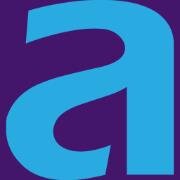Management & Barriers to Uptake of Biosimilars under Pharmacy vs. Medical Benefit (Part 3 of 5)
Biologics and biosimilars can be managed under pharmacy or medical benefit. The management strategies deployed by employers will vary depending on what side of the benefit the drug is billed under. The key characteristics that determine if biologics and biosimilars are managed under pharmacy or medical benefit include, but are not limited to:
route of administration
administration by a healthcare provider is required
special handling with complex storage & distribution process
healthcare provider monitoring is required after administration
Biologics and biosimilars that are managed under the pharmacy benefit typically can be self-administered and do not require significant monitoring after each dose. On the other hand, biologics and biosimilars under medical benefit are usually administered at a provider’s office or at a healthcare facility by a healthcare provider, and they may require special monitoring after administration.
Because of the differences in how biologics and biosimilars are managed and reimbursed under pharmacy vs. medical benefit, there are unique barriers to biosimilar uptake that each side presents. Below we discuss two barriers to biosimilar uptake one under each side of the benefit.
Under the pharmacy benefit, biosimilar uptake may be impacted by its place on various pharmacy benefit formularies. Pharmacy benefit managers (PBMs) can decide to place a biosimilar on their formulary as a preferred product or non-preferred product. In addition, they may decide to put utilization restrictions through various utilization management strategies such as prior authorization. Several reasons may be offered by a PBM as to why a biosimilar maybe preferred or not. One key reason to note is the rebate potential associated with a biosimilar or its corresponding reference biologic. Manufacturers of some reference biologics may offer rebates as high as 50% of the wholesale acquisition cost (1). Thus, making biosimilars less financially attractive to be a preferred products on formularies.
It is imperative that plan sponsors take a proactive approach to their biosimilar uptake strategy. By taking a proactive approach plan sponsors can ensure that safe and effective biosimilars entering the market at lower cost are preferred products on their pharmacy benefit formalities for their plan.
Under medical benefit one barrier for biosimilar uptake is the reimbursement method used. A biologic or biosimilar that is administered by a healthcare provider in an outpatient setting is subject to the “buy-and-bill” method. Under this reimbursement method, the outpatient facility or provider office purchases the administered drugs at the Average Sales Price (ASP) and charge plan sponsors the drug cost plus a markup, which can range anywhere from 6% to 10% of ASP. Because of this, there is little financial incentive for prescribers to prescribe a lower cost product such as a biosimilar, as this would lead to lower revenues for the provider.
In the commercial market, these drugs are typically reimbursed following a percent-of-charge method, where plan sponsors reimburse a percent of the amount billed by providers. This can yield a more significant profit margin than the ASP markup method, potentially over 100% of the drug cost(2). The Centers for Medicare and Medicaid Services (CMS) has made an effort to avoid this disincentive for biosimilars by reimbursing providers the biosimilar’s ASP plus a 6% markup of the reference product. However, as mentioned above, many high-cost biologics can be reimbursed at such a high margin that the CMS’ reimbursement rule may not be enough to sway the current preference for biological products.
To ensure barriers to biosimilar uptake are addressed for their benefit, plan sponsors need to take a proactive approach and must consider implementing a biosimilar uptake strategy under both pharmacy and medical benefit.



